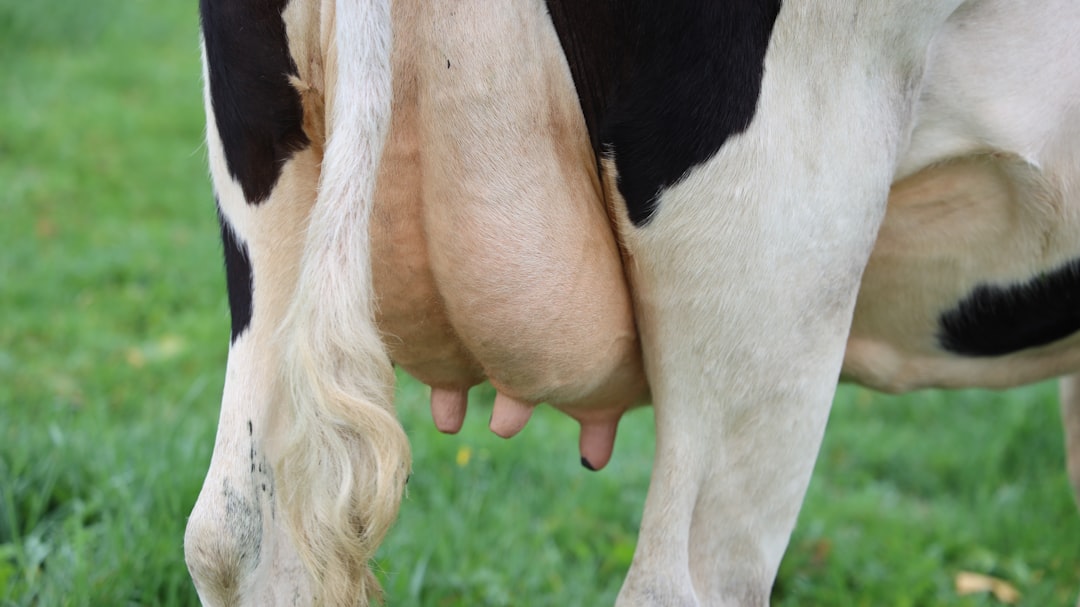Dairy cattle nutrition is the cornerstone of productive and sustainable milk production. A well-formulated ration balances energy, protein, fiber, and minerals to maximize milk yield while safeguarding cow health. This guide explores feed resources, ration design, and forage management strategies tailored to different stages of lactation and operational scales.
Nutritional Requirements Across Lactation Stages
Dairy cows have dynamic nutritional needs depending on their lactation phase. Tailoring rations to these stages ensures optimal productivity and health:
-
Early Lactation (0–70 days post-calving)
-
Energy and protein demands peak to support high milk output.
-
Rations should include 16–19% crude protein and high-energy concentrates like corn or barley.
-
Dry matter intake (DMI) should reach 4% of body weight by 10 weeks post-calving to sustain peak milk production.
-
-
Mid-Lactation (70–200 days)
-
Protein requirements drop slightly (15–17% crude protein), but maintaining DMI is critical to prolong peak yields.
-
Replace starchy concentrates with non-forage fibers (e.g., beet pulp, soyhulls) to support rumen health.
-
-
Late Lactation (200+ days)
-
Focus shifts to body condition recovery and preparing for the dry period.
-
Reduce concentrate levels and prioritize high-fiber forages like alfalfa hay.
-
Feed Resources for Balanced Rations
Dairy rations combine forages, concentrates, and by-products to meet nutritional targets:
1. Forages
-
Legumes (e.g., alfalfa): High in protein (18–22%) and calcium, ideal for early lactation.
-
Grasses (e.g., ryegrass, corn silage): Provide energy and fiber, forming 40–45% of total ration dry matter.
-
Silage Management: Fermenting forages like corn or alfalfa preserves nutrients. Ensure proper compaction and airtight storage to prevent spoilage.
2. Concentrates
-
Energy Sources: Corn, barley, and wheat (>40% starch) boost calorie intake.
-
Protein Supplements:
-
Rumen-degradable: Soybean meal, canola meal (15–50% crude protein).
-
Rumen-protected: Blood meal, distillers grains (>60% undegradable protein).
-
-
By-Products: Beet pulp, citrus pulp, and brewer’s grains add fiber and reduce feed costs.
3. Minerals and Vitamins
-
Calcium, phosphorus, and magnesium are critical for bone health and milk synthesis.
-
Vitamin A, D, and E supplementation prevents deficiencies, especially in confined systems.
Formulating Balanced Rations
A Total Mixed Ration (TMR) ensures uniform nutrient intake and minimizes digestive issues:
-
Fiber Balance: Maintain 28–35% neutral detergent fiber (NDF) to prevent rumen acidosis.
-
Starch Limits: Avoid exceeding 25–30% starch in TMRs to safeguard rumen pH.
-
Forage-to-Concentrate Ratio: Adjust based on milk yield:
-
High-producing cows: 50:50 (forage:concentrate).
-
Low-producing cows: 70:30.
-
Example Ration for Mid-Lactation (25 kg milk/day):
-
Corn silage: 15 kg
-
Alfalfa hay: 4 kg
-
Soybean meal: 2 kg
-
Beet pulp: 1.5 kg
-
Mineral-vitamin premix: 0.2 kg
Forage Management Best Practices
-
Soil Health: Healthy, mineralized soils yield nutrient-dense forages. Regular soil testing ensures optimal pH and fertility.
-
Harvest Timing: Cut legumes at early bloom and grasses at boot stage for peak nutrient content.
-
Storage: Use silage inoculants to enhance fermentation and reduce dry matter losses.
Challenges and Solutions
-
Heat Stress: Increase potassium (1.5–2.0% of ration) and provide cooling systems to maintain DMI.
-
Low-Quality Forages: Supplement with by-products (e.g., cottonseed cake) or rumen-protected protein.
-
Feed Costs: Source local by-products like rice bran or brewery waste to reduce expenses.
Conclusion
Optimal dairy nutrition hinges on precise ration formulation, quality forage management, and adaptive strategies for lactation stages. By integrating diverse feed resources—from high-energy grains to upcycled by-products—farmers can enhance milk yields, improve cow health, and boost profitability sustainably. Regular monitoring and adjustments ensure rations meet evolving herd needs in dynamic climates and markets.
For region-specific strategies, consult local extension services or dairy nutritionists to tailor these guidelines to your operation’s unique conditions.
Citations:
- https://smallfarms.oregonstate.edu/sites/agscid7/files/feedingmilkingcow_1.pdf
- https://www.msdvetmanual.com/multimedia/table/feeding-guidelines-for-large-breed-dairy-cattlesup-sup
- https://www.wur.nl/nl/show/balanced-feeding-of-the-dairy-cow-1.htm
- https://iserd.net/ijerd111/11-1-10.pdf
- https://extension.psu.edu/concentrates-for-dairy-cattle
- https://clear.ucdavis.edu/explainers/dairy-cows-original-upcyclers
- https://cefs.ncsu.edu/wp-content/uploads/03optimizingnutritionzimmer.pdf
- https://www.veeproholland.com/wp-content/uploads/2021/05/VeeproForageManagementsmall.pdf
- https://www.thebullvine.com/news/enhancing-forage-quality-for-improved-dairy-cow-nutrition/
- https://www.msdvetmanual.com/management-and-nutrition/nutrition-dairy-cattle/nutritional-requirements-of-dairy-cattle
- https://afs.ca.uky.edu/files/balancing_rations_for_dairy_cows_using_commerical_supplements.pdf
- https://afs.ca.uky.edu/content/manage-your-grazing-system-for-optimum-dairy-cow-performance
- https://www.nadis.org.uk/disease-a-z/cattle/nutrition-of-dairy-herds/part-3-conserved-forage-management/
- https://extension.umn.edu/dairy-milking-cows/formulating-dairy-cow-rations
- https://www.dairyglobal.net/health-and-nutrition/nutrition/ways-to-optimise-forage-management-for-dairy-herds/
- https://www.publish.csiro.au/ebook/chapter/SA0501051
- https://www.vet.cornell.edu/animal-health-diagnostic-center/programs/nyschap/modules-documents/basic-nutrition-dairy-cattle
- https://extension.psu.edu/total-mixed-rations-for-dairy-cows
- https://agritech.tnau.ac.in/expert_system/cattlebuffalo/Feeding%20management.html
- https://nydairyadmin.cce.cornell.edu/uploads/doc_97.pdf
- https://www.msdvetmanual.com/management-and-nutrition/nutrition-dairy-cattle/feeding-and-nutritional-management-of-dairy-cattle
- https://www.sciencedirect.com/science/article/pii/S1871141319303294
- https://www.alltech.com/en-ie/forage-management
- https://lactanet.ca/en/eight-strategies-for-increasing-forage-stocks/
- https://www.americandairy.com/dairy-diary/what-do-dairy-cows-eat/
- https://www.feedstrategy.com/animal-nutrition/article/15440902/examining-the-components-of-optimal-dairy-cow-nutrition
- https://nydairyadmin.cce.cornell.edu/uploads/doc_98.pdf
- https://albertamilk.com/ask-dairy-farmer/what-do-dairy-cows-eat/
- https://www.fao.org/dairy-production-products/production/feed-resources/en
- https://www.thebullvine.com/news/advanced-forage-management-strategies-drive-dairy-farm-sustainability/

Comments
No comments yet. Be the first to comment!
You must be logged in to comment. Login